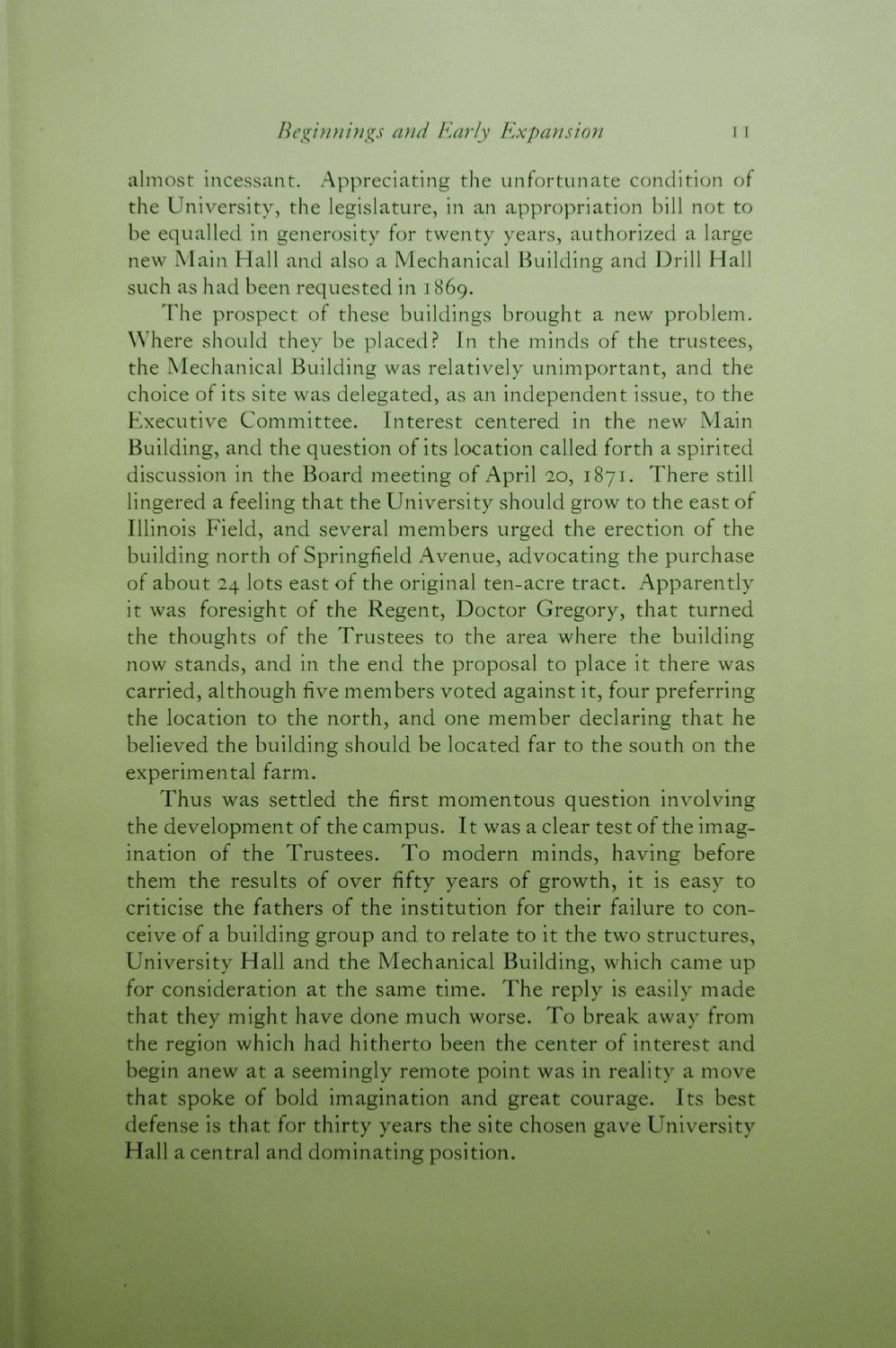| |
| |
Caption: Book - 30 Year Master Plan (Tilton & O'Donnell)
This is a reduced-resolution page image for fast online browsing.

EXTRACTED TEXT FROM PAGE:
Beginnings and Early Expansion 11 almost incessant. Appreciating the unfortunate condition of the University, the legislature, in an appropriation bill not to be equalled in generosity for twenty years, authorized a large new Main Hall and also a Mechanical Building and Drill Hall such as had been requested in 1869. The prospect of these buildings brought a new problem. Where should they be placed? In the minds of the trustees, the Mechanical Building was relatively unimportant, and the choice of its site was delegated, as an independent issue, to the Executive Committee. Interest centered in the new Main Building, and the question of its location called forth a spirited discussion in the Board meeting of April 20, 1871. There still lingered a feeling that the University should grow to the east of Illinois Field, and several members urged the erection of the building north of Springfield Avenue, advocating the purchase of about 24 lots east of the original ten-acre tract. Apparently it was foresight of the Regent, Doctor Gregory, that turned the thoughts of the Trustees to the area where the building now stands, and in the end the proposal to place it there was carried, although five members voted against it, four preferring the location to the north, and one member declaring that he believed the building should be located far to the south on the experimental farm. Thus was settled the first momentous question involving the development of the campus. It was a clear test of the imagination of the Trustees. To modern minds, having before them the results of over fifty years of growth, it is easy to criticise the fathers of the institution for their failure to conceive of a building group and to relate to it the two structures, University Hall and the Mechanical Building, which came up for consideration at the same time. The reply is easily made that they might have done much worse. To break away from the region which had hitherto been the center of interest and begin anew at a seemingly remote point was in reality a move that spoke of bold imagination and great courage. Its best defense is that for thirty years the site chosen gave University Hall a central and dominating position.
| |